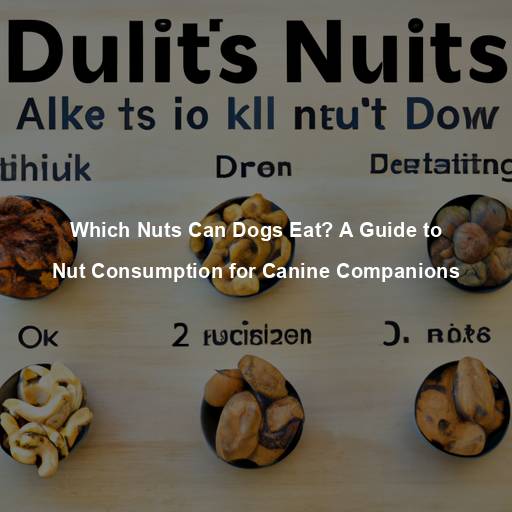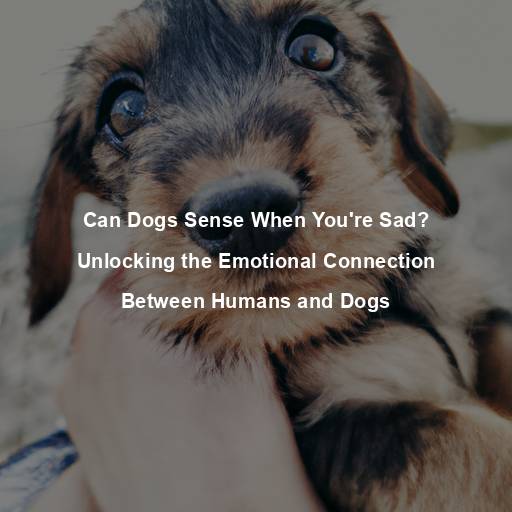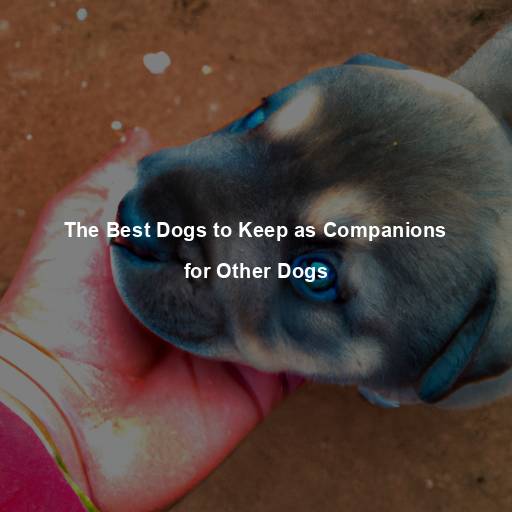When Dogs Are Happy: Unraveling the Secrets of Canine Joy
Last Updated on November 2, 2023 by Evan
Contents
- 1 Understanding the Canine Psyche
- 2 A Tail-Wagging Welcome
- 3 Signs of Canine Happiness
- 4 Nurturing Canine Happiness
- 5 The Joy of Unconditional Love
- 6 Embracing Canine Happiness
- 7 Understanding Canine Emotional Needs
- 8 Enhancing Canine Happiness
- 9 The Language of Canine Happiness
- 10 The Impact of Environment on Canine Happiness
- 11 The Art of Unconditional Love
- 12 FAQs – When Dogs are Happy
Understanding the Canine Psyche
Dogs, often referred to as man’s best friend, have an innate ability to bring happiness and joy to our lives. But have you ever wondered what truly makes these furry companions happy? Delving into the intricate workings of the canine mind, we embark on a journey to unravel the secrets behind a dog’s happiness. By understanding their needs, emotions, and behaviors, we can forge an even stronger bond with our beloved pets.
A Tail-Wagging Welcome
The Joy of Greetings
The sheer joy that dogs radiate through their exuberant tail wagging is a sight to behold. Whether you’ve only stepped out for a brief moment or returned after an extended absence, their heartfelt greetings never cease to bring a smile to your face. Beyond just a physical expression of excitement, the wagging of their tails serves as a nuanced form of communication. When those furry companions vigorously wag their tails, it’s their unique way of expressing their overwhelming happiness and utter delight at your return.
The Power of a Smile
Who can resist the infectious grin of a joyful dog? When dogs are truly happy, their mouths open wide, and their tongues hang out, forming what is commonly known as the “doggy smile”. This expression of happiness is not only a visual delight for us but also an indication of their contentment and pleasure. It’s a testament to the positive experiences they associate with their surroundings, whether it’s their favorite park, a beloved toy, or simply being in the presence of their human companions.
Signs of Canine Happiness
A Playful Spirit
There is no denying that playfulness is an unmistakable indicator of a dog’s blissful state. Whether they’re bouncing about, zooming around with joy, or eagerly fetching a ball, their exuberance is a vibrant display of their zest for life. Playtime isn’t merely a source of entertainment for our canine companions, but rather a vital outlet for their physical and mental well-being. It grants them the opportunity to release their bottled-up energy, stimulate their senses, and forge deeper connections with their human counterparts.
Relaxed Body Language
One can easily spot a joyful and serene dog by the way they carry themselves – soothed and liberated from any stiffness. Delight is evident when their bodies become supple, muscles unwinding effortlessly. Take note of the tail, gently swaying in a state of equilibrium, neither soaring too high nor drooping too low. The ears sit comfortably in their natural state, devoid of trepidation or aggressiveness.
Bright and Sparkling Eyes
They say the eyes are the gateway to the depths of the soul, a concept that extends beyond the human realm. Our faithful canine companions are no exception. When a dog’s spirits soar, their eyes radiate an undeniable brilliance that transcends words. A twinkle in their gaze serves as a vivid testament to the joy that resides within their being.
Nurturing Canine Happiness
The Gift of Quality Time
There’s something truly extraordinary about the connection we share with our four-legged companions. They yearn for our presence, our undivided attention, and our unwavering love. By investing our time in their cherished company, we gift them with an unparalleled sense of security and contentment. Engaging in activities that ignite their joy, like jovial strolls, lively games, or even just basking in the warmth of a cuddle, helps build an unbreakable bond.
A Balanced Lifestyle
Similar to humans, dogs thrive when they have a balanced lifestyle that meets their physical, mental, and emotional needs. Providing them with a nutritious diet, regular exercise, and mental stimulation is essential for their overall well-being and happiness. Engage in activities that challenge their intellect, such as puzzle toys or training sessions. Additionally, ensure they have a comfortable and safe environment that offers them a sense of security and peace.
Positive Reinforcement
When it comes to nurturing our furry friends, positive reinforcement shines as a mighty force. By showering our well-behaved canines with praise, treats, and playtime, we ignite their internal spark of joy, motivating them to keep up the marvelous behaviors we cherish. Our beloved dogs bask in the warmth of our approval and affection, and with positive reinforcement, we offer them the compass they crave to thrive and deepen our connection. By prioritizing these uplifting techniques, we unlock the potential for a harmonious haven where their happiness flourishes and our bond blossoms.
The Joy of Unconditional Love
A Lifelong Companion
Diving into the enigmatic world of canine emotions, one cannot deny the sheer ecstasy that emanates from the unbreakable bond between humans and their loyal companions. There is a remarkable intrinsic quality in dogs, a bottomless reservoir of affection that transcends all our shortcomings. Their lack of judgment and remarkable ability to forgive concoct a mysterious elixir of solace, warmth, and understanding for us to revel in. In a topsy-turvy world, these furry creatures manifest the true essence of genuine connections, enabling us to cherish the simplicity in life’s fleeting instances.
Reciprocity of Happiness
There’s an inexplicable charm in the intricate dance between humans and their four-legged companions. As we revel in the sheer delight our canine friends bring us, we hold the extraordinary ability to reciprocate and infuse their lives with boundless joy and contentment. This magical connection hinges on our understanding of their needs – showering them with affection, nurturing their well-being, and showering them with the undivided attention they crave. In this harmonious embrace, their contagious exuberance and unwavering loyalty gift us with an indescribable sense of bliss, leaving us fulfilled beyond measure.
Embracing Canine Happiness
In the midst of life’s ever-changing landscapes, our four-legged friends become beacons of joy amidst the perplexities we face. Their unspoken resilience and unwavering loyalty provide a sense of comfort and burstiness in our existence. By delving into the intricate world of canine happiness, we unravel the boundless tapestry of love, devotion, and giddy moments that our furry companions bring. Let us embark on this enchanting voyage, as we celebrate the profound joy that dogs bestow upon our lives.
The Neurochemistry of Joy
Ever stopped to ponder the enigmatic workings of a canine mind, particularly when they exude pure bliss? It turns out that unraveling the mysteries lies within the captivating domain of neurochemistry. When a furry friend revels in joy, their intricate brains weave a mesmerizing tapestry, summoning forth a celestial concoction of neurotransmitters. Enter dopamine, oxytocin, and serotonin, the venerable triumvirate imparting euphoria and tranquility.
The Power of Scent
Canine companions possess an extraordinary sense of smell that greatly influences their well-being. The intricate olfactory system of dogs enables them to perceive elusive aromas that elude human detection. When dogs immerse themselves in the world of scents, it sets off a series of delightful sensations in their minds. This olfactory stimulation not only offers mental and sensory enrichment but also contributes to their overall contentment and happiness.
Understanding Canine Emotional Needs
Social Interaction and Companionship
Dogs are social animals at heart, and their happiness is closely tied to social interaction and companionship. They thrive on human companionship and the presence of other dogs or animals. Loneliness and isolation can have a profound negative impact on their emotional well-being. It is crucial to provide them with ample opportunities for socialization, whether it’s through playdates with other dogs, visits to the dog park, or joining obedience classes.
The Importance of Routine
Dogs thrive on routine and find solace in the familiar patterns of their everyday lives. The comforting cadence of a well-structured schedule offers them a safe haven amidst the chaos of the world. Each meal, stroll, and naptime becomes a moment of serenity, etching a sense of calm into their beings. By establishing a predictable routine tailored to their unique preferences, you pave the way for a blissful existence that transcends mere happiness.
Enhancing Canine Happiness
Physical Exercise for a Healthy Body and Mind
Regular physical exercise is vital for a dog’s happiness and well-being. Engaging in physical activities not only helps to maintain their physical health but also stimulates their minds and prevents boredom. The type and amount of exercise required may vary depending on the breed, age, and individual needs of your dog. Whether it’s going for brisk walks, playing fetch, or participating in agility training, finding activities that align with your dog’s energy levels and interests is key.
Mental Stimulation and Enrichment
A happy dog is one that is mentally stimulated and engaged. Dogs are intelligent beings that thrive on mental challenges and problem-solving activities. Providing them with opportunities for mental stimulation can prevent boredom and destructive behaviors. Puzzle toys, interactive games, and training sessions are excellent ways to keep their minds sharp and engaged.
The Language of Canine Happiness
Body Language and Communication
Understanding a dog’s body language is crucial in gauging their emotional state and happiness. Dogs communicate through a combination of vocalizations, facial expressions, and body postures. Recognizing and interpreting these signals allows us to respond appropriately and ensure their well-being. A wagging tail, relaxed body, and a soft gaze are signs of happiness, while a tucked tail, flattened ears, or a stiff posture may indicate fear or discomfort.
The Power of Positive Reinforcement
Encouraging happiness and good behavior in our beloved dogs can be achieved through the powerful practice of positive reinforcement. By showering them with praise, treats, or other forms of positive stimuli when they exhibit desired behaviors like sitting on command or walking politely on a leash, we can create a harmonious connection between actions and positive outcomes. The magic lies in the fact that our furry companions start associating these behaviors with joy and fulfillment, amplifying both their training and overall well-being. Consistency and patience are key when employing positive reinforcement techniques, as they foster an environment that is both rewarding and uplifting for our four-legged friends.
The Impact of Environment on Canine Happiness
Creating a Safe and Comfortable Space
Providing a safe and comfortable environment is essential for a dog’s happiness. Dogs need a designated space where they can retreat and feel secure. Whether it’s a cozy dog bed, a crate, or a quiet corner in your home, giving them a dedicated space helps alleviate anxiety and stress. Additionally, ensure that their environment is free from potential hazards or triggers that may cause fear or discomfort.
The Great Outdoors: Nature’s Playground
Discovering the wonders of the outdoors is a transformative experience, not only for us but also for our four-legged pals. Canines possess a remarkable connection to nature, a trait that should be nurtured and harnessed. Allowing your furry companion to roam freely amidst the lush greenery of nature invigorates their senses, triggers their curiosity, and unlocks a world of mental stimulation. As dogs sniff their way through winding trails or frolic in lively parks, they absorb the enchanting symphony of sights, sounds, and scents that awaken their spirits and whisk them away from the monotony of everyday life.
The Art of Unconditional Love
The Healing Power of Dogs
Dogs possess an extraordinary ability to provide emotional support and unconditional love to their human companions. They have an innate sense of empathy and can pick up on our moods and emotions. When we are sad, they offer a gentle presence and comforting cuddles. When we are happy, they share in our joy with boundless enthusiasm.
The Circle of Happiness
There exists a remarkable enigmatic connection between mankind and our furry canine companions, an intricate dance of reciprocal affection and reliance. In our noble quest to bestow happiness upon these loyal creatures, they, in their spellbinding manner, pour forth immeasurable elation and contentment into our own existence. The love they tender, unwavering companionship they provide, and their steadfast loyalty are a testament to the depths of their devotion. By nurturing their euphoria, we foster an atmosphere of serenity and unity that, in turn, profoundly enriches the tapestry of our own lives.
FAQs – When Dogs are Happy
What are the signs that indicate a happy dog?
When dogs are happy, they often display various signs to express their joy. Some common indications include a relaxed body posture, wagging tail (usually with loose, wide sweeps), bright and alert eyes, a playful demeanor, and an open, slightly panting mouth. They might also initiate and engage in social interactions, such as nudging or leaning against their favorite humans or other animals. A happy dog may exhibit good appetite, have a healthy coat, and show interest in toys or activities they enjoy. Overall, a contented dog tends to exude positive energy and enthusiasm.
How do I know if my dog is experiencing pure joy and not just excitement?
Deciphering the complex emotions of our canine companions can sometimes leave us scratching our heads. However, there are a few telltale signs that can shed light on whether our furry friends are experiencing unadulterated bliss or simply brimming with excitement. A blissful pup exudes an air of relaxation, gracefully moving with a calm demeanor, while an excited pooch may exhibit a more frenzied and hyperactive energy. Furthermore, a truly content dog will prioritize positive interactions and maintain a tranquil temperament, whereas an overly excited canine may struggle to contain their exuberance and prove less inclined to heed commands. By closely observing our dogs’ overall behavior, facial expressions, and responses to stimuli, we can unlock the enigmatic world of their emotions and discern between pure joy and mere excitement.
Can all dogs experience happiness?
Yes, all dogs have the capacity to experience happiness. Dogs are social animals by nature, and positive emotions, including happiness, play a crucial role in their well-being. However, it’s essential to remember that each dog is an individual, and their levels of happiness can vary based on various factors such as temperament, health, environment, and past experiences. Providing a loving and caring environment, along with fulfilling their basic needs for food, water, exercise, and mental stimulation, significantly contributes to a dog’s overall happiness.
How can I make my dog happier?
Discover the myriad avenues that pave the way to your furry friend’s ultimate state of bliss and fulfillment. Primarily, embark on a journey of regular exercise tailored to suit your dog’s unique breed, age, and vitality. Remember, the key to maintaining their delight lies in striking a harmonious balance between physical exertion and mental stimulation. Furthermore, seize the opportunity to invest quality time in the precious companionship that exists between you and your loyal accomplice; lavish them with tender affection, unwavering attention, and abundant praise during exhilarating training sessions. As if that weren’t enough, adherence to a meticulously structured routine, coupled with the provision of a wholesome diet and a secure, cozy habitat, stands as fundamental pillars in the realm of canine merriment. And lastly, open the door to a world of social interaction for your four-legged confidant; encourage them to mingle with fellow canines and tantalize their senses with an array of stimulating toys and activities catered specifically to their individual predilections.
How can I tell if my dog is unhappy or in distress?
It is essential to be aware of signs that may indicate your dog is unhappy or experiencing distress. Some common indications include a withdrawn or fearful body posture, low or tucked tail, avoidance of eye contact, excessive whining or whimpering, decreased appetite, destructive behavior, excessive panting or drooling, restlessness, or aggression. If you notice these signs persisting or if your dog’s behavior drastically changes, it is recommended to consult with a veterinarian or a professional dog behaviorist for further evaluation and guidance.







